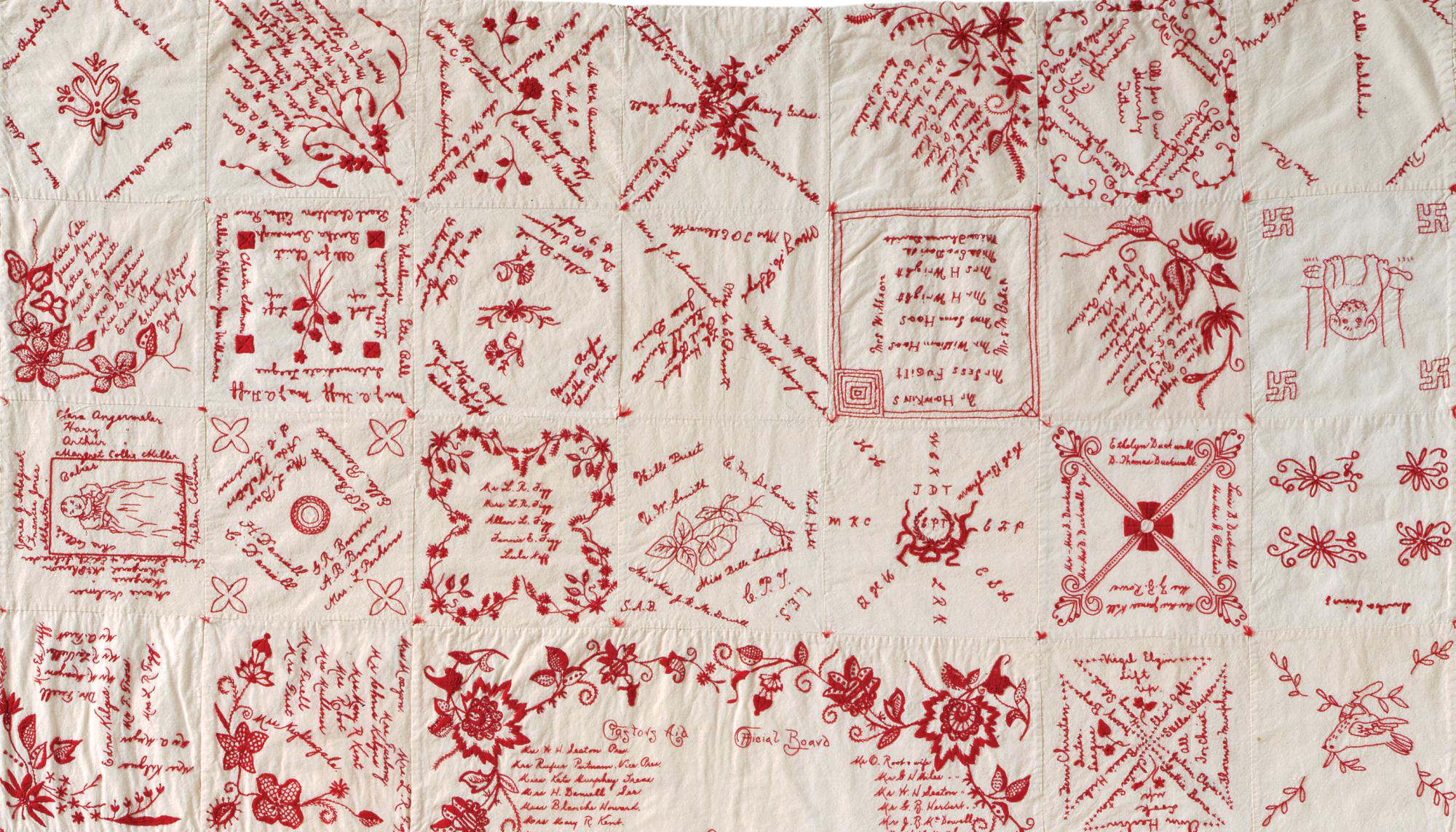
Signature Cloths
Sept 5, 2014-May 31, 2015

When was the last time you wrote your signature? What does your signature say about you? If in the digital age we don’t use signatures, how will we authentically represent ourselves?
Right now, you are surrounded by “Signature Cloths,” quilts covered with distinctive, hand-written and embroidered autographs of ordinary people. These signatures illustrate shared purposes, new communities, individuality, and—at the most basic level—evidence of the signer’s existence.
Guest Curator Lynn Setterington raises questions about how humans create connection through a simple act—signing one’s name. Setterington studied traditional quilts from the IQM collections, then created individual and collaborative artwork, what she calls “signature cloths.” Though unified in name, the signature cloths represent unique stories, each told through the process of signing and stitching. Some are solemn, some are whimsical, but all are earnest representations of meaningful, social, experience all the signers shared.